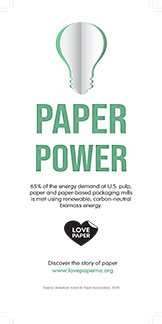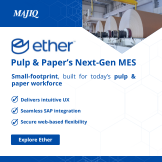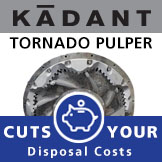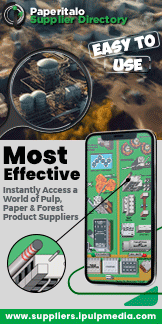Perhaps one way to accelerate innovation, productivity improvement, and value creation in our industry is to be more transparent and vocal about what projects work and which ones that don't. That pesky feature of capitalism we call competition stifles the notion of a firm's public disclosure of what could even remotely be perceived as negative by investors. Profitability becomes the sole lens to sort out the market, and how that is achieved is a tightly guarded secret within the firm. So here we are, in a secretive world that creates a perceived notion of competitive advantage to those firms who closely guard what they have learned.
Try to imagine a world where public disclosure of what works and what bombs was the norm. Can you then imagine the mudslinging that would go on in public forums on who messed up, who cost who a lot of money, who made who a lot of money, who lied, who delivered, who made hard things seem easy and easy things seem hard? Then the ensuing litigation would only make the lawyers rich.
The way merit gets established now, in my experience, is a network of references, both good and bad. The way it goes down is: seller tells paper mill buyer, "my solution is better, just ask company X, Y, and Z how we delivered for them." Sometimes, negative references for competitor A, B, and C might also find its way into the conversation. Of course, much of the full context of any situation is left out. Resorting to gossip is not out of the question either.
The reference system works only if competing paper companies are willing to privately acknowledge greatness when they see it. Sometimes that sharing of references amongst competitors regarding positive and negative outcomes will happen off-the-record, or through gossipy channels. On a supplier's reference list, the paper company named "confidential" will appear, along with their city and state...with a wink, wink. The best references for a supplier to have in their pocket is inter-company references, i.e., different mills in the same company. When learned experience is shared, improvements come faster and with greater and greater impact.
Many great ideas and solutions, along with mistakes and mishaps, are also spread through job changes. People move from company to company, and take all of their positive or negative experiences with them. It doesn't matter if you're hourly or salaried or optioned. Nor does it matter if you are in IT, R&D, production, facilities, converting, quality, maintenance, etc. What we refer to as "cross pollination" happens as naturally in industry as it does in fields of flowers. Non-disclosure agreements try to mitigate this, but how can you restrict someone's preferences in their future endeavors?
Supplier reputations are built and ruined constantly in a dynamic system. So how does anyone in a buying role put themselves into an informed position, free of bias, and chock full of logic in a world of secrets? In other words - in the context of commercial relationships in the paper industry - how does a paper manufacturer know what to buy and who to buy it from?
I think that I was extremely fortunate to start my career out the way I did. It was for an automation company, targeting the pulp & paper industry, who valued RESULTS from their products & solutions - so much so that the company tagline was, quite literally, THE RESULT COMPANY.
The company backed up this RESULTS culture with an entire team of what were called application engineers. There were like 20 of us across North America, and many more around the world. The application engineer's job had a distinct, cyclical workflow, 1.) collect the pre-sale paper machine process data, 2.) predict plausible outcomes of adopting a new solution, 3.) train machine operators on newly installed systems to achieve those outcomes, and 4.) document the quantifiable results for every single automation solution sale. Once the cycle was complete, it was on to the next project. There were generally 3 to 5 projects somewhere in this cycle concurrently for each engineer to manage.
When dozens of engineers did this process over and over for decades, a whole new marketing and sales process was born. You see, the 'results reports' produced over that timeframe multiplied like rabbits. We knew exactly what to expect for any type of machine, grade, speed, or furnish because every situation was documented, all across the globe. All we had to do was visit the RESULTS report filing cabinet in the office (this pre-dates electronic files) and find similar cases. Lower MD/CD variability. Fewer incidents of unplanned downtime. Less quality rejects. Higher productivity through yield improvements, or flat-out machine speed increases. Faster grade changes. It was all there to use for the next potential sale.
The library of results reports provided customers a sense of comfort that improvement projections had been obtained many times before in similar cases. It was not an 'installed base' list, or a general reference list. It was a tranche of similar customers' experience working with this company and getting an outcome that exceeded expectations. It really set us apart from the field of competition. Many competitors followed suit to keep in the game. The company managed to establish their own merit in the eyes of the market.
Because all of this happened several decades ago, and technology like laptops and clouds did not exist, it felt like most, if not all companies would be able to adopt the same cultural mindset as it got easier to do and share. After every single project, produce a document that simply states the process parameters, scope of work, notable hurdles overcome, and the outcome - both from a % improvement and a dollar figure representing an ROI. Yet, the funny thing is, I find it to be a rare occasion to document such a broad cornucopia of deals. Many of today's solution providers produce a handful of case studies, but not for every project. It takes a whole new level of confidence to stand behind every installation or application with a document that states, "this is how much money you made by working with us. Here's what we learned this time for the next time we do this again."
I guess paper manufacturers don't like their information being shared. Suppliers don't prioritize comprehensive outcome assessments and key learnings for building a knowledge repository. Nobody is offering their shoulders for others to stand on and see further. That might put some of their near-term profit at risk. I say, "booooo."
So what happened to THE RESULTS COMPANY? Bought by a conglomerate which ultimately stifled the founding principles in favor of rigid execution and risk management.
Steve Sena (stevesena@me.com) is a Cincinnati native. He obtained degrees in Paper Science & Engineering from Miami University in Oxford, OH and an MBA concentrating in Economics from Xavier University. He's worked for a broad array of leading producers, suppliers, and converters of pulp and paper grades.






















